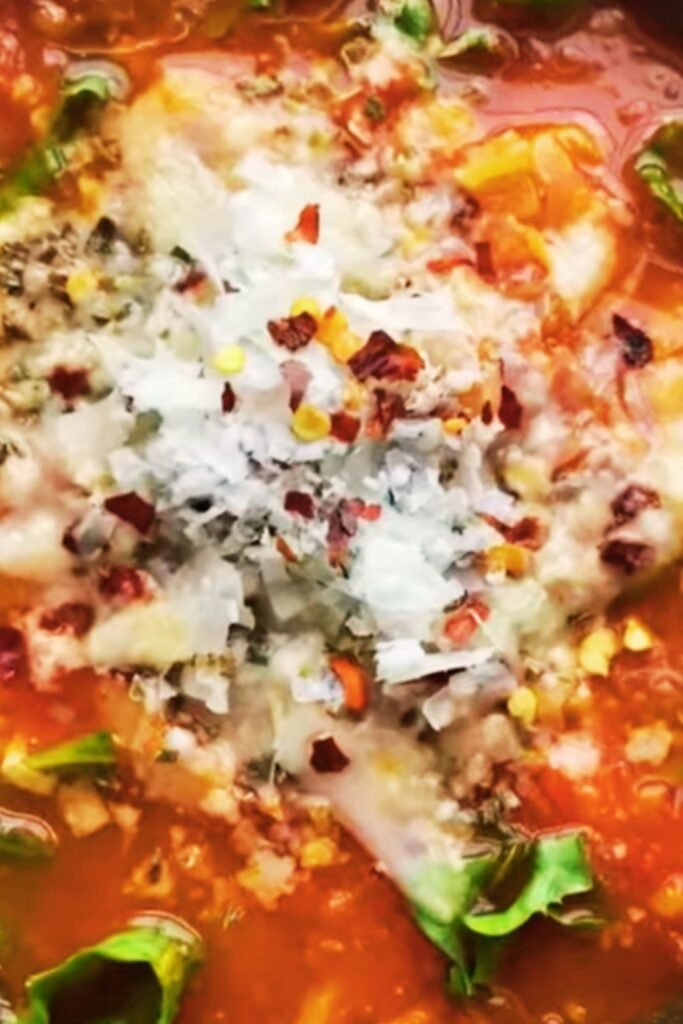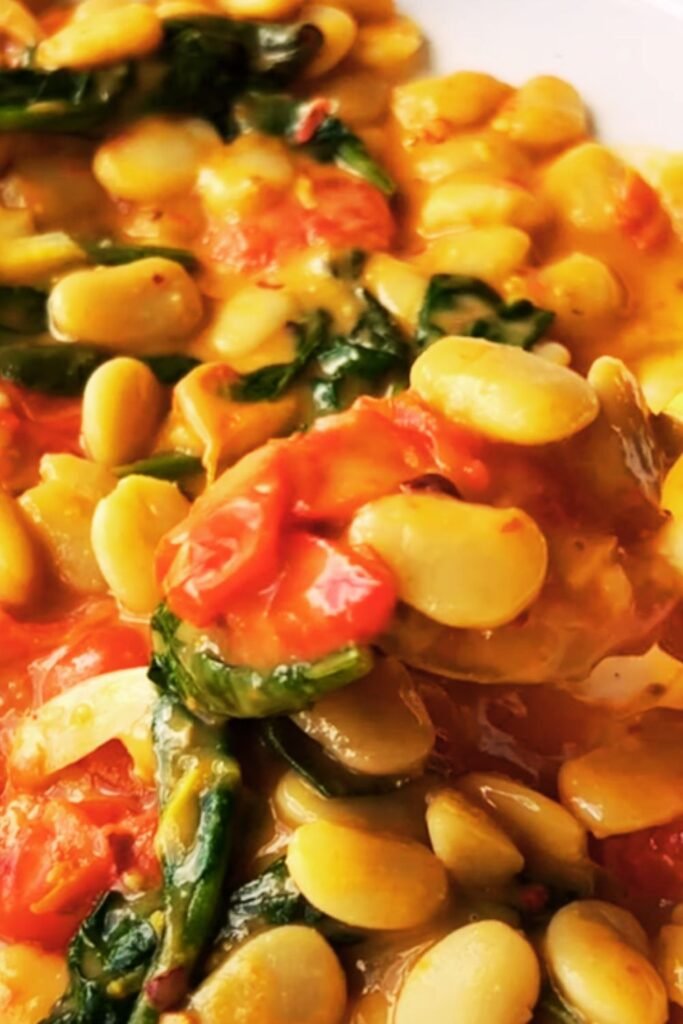There’s something magical about a steaming bowl of soup that warms both body and soul. As someone who’s spent countless hours perfecting homemade soups, I can confidently say that this Creamy Tuscan White Bean Lemon Soup has earned a permanent spot in my recipe collection. Today, I’m thrilled to share with you this Italian-inspired masterpiece that combines creamy white beans, bright lemon, and aromatic herbs for a truly unforgettable dining experience.
The Heart and Soul of Tuscan Cuisine
Tuscany, with its rolling hills and rustic farmhouses, has given the world some of the most comforting food traditions. Tuscan cooking embraces simplicity, focusing on quality ingredients and time-honored techniques. The region’s cuisine often features beans as a staple protein, particularly the cannellini bean, which Tuscans have lovingly called “poor man’s meat” for centuries.
I first encountered this soup during a spring trip to a small village outside Florence. After a day of exploring under an unexpected rainstorm, I ducked into a tiny, family-owned trattoria. The nonna (grandmother) served me this soup, explaining that it had been in their family for generations. One spoonful, and I was transported – the velvety texture, the perfect balance of lemon brightness against earthy beans, and the aromatic herbs created a harmony I’d never experienced before.
Now, whenever the weather turns cool or I need a bit of comfort, this soup is my go-to recipe. It’s substantial enough to serve as a main course yet elegant enough for special occasions. The best part? It’s surprisingly simple to make.
Ingredients: The Foundation of Excellence
For a truly exceptional Tuscan White Bean Lemon Soup, ingredient quality matters tremendously. Here’s what you’ll need:
For the Soup Base:
- 2 tablespoons extra virgin olive oil (preferably Italian)
- 1 large yellow onion, finely diced
- 3 medium carrots, diced into small cubes
- 2 celery stalks, finely chopped
- 4 garlic cloves, minced
- 1 tablespoon fresh rosemary, finely chopped
- 1 tablespoon fresh thyme leaves
- 1 teaspoon dried oregano
- 1/4 teaspoon red pepper flakes (optional)
- 3 (15-ounce) cans cannellini beans, drained and rinsed
- 6 cups vegetable broth (homemade preferred)
- 2 bay leaves
- 1 Parmesan rind (optional but highly recommended)
- Salt and freshly ground black pepper to taste
For the Finishing Touches:
- Juice and zest of 2 lemons (organic, if possible)
- 1 cup heavy cream or coconut cream for dairy-free version
- 1 bunch Tuscan kale (lacinato/dinosaur kale), stems removed and roughly chopped
- 1/4 cup fresh basil, thinly sliced
- Freshly grated Parmesan cheese for serving
- Crusty artisan bread for serving
Essential Equipment
Before we begin cooking, let’s ensure we have the proper tools:
| Equipment | Purpose | Recommendation |
|---|---|---|
| Dutch Oven or Heavy Pot | Provides even heating and perfect simmering | 5-6 quart capacity with lid |
| Immersion Blender | For creating silky texture while leaving some beans whole | Any quality brand with metal shaft |
| Microplane | For perfect lemon zest | Sharp, fine grater |
| Sharp Chef’s Knife | For precise vegetable cutting | 8-inch blade preferred |
| Wooden Spoon | For stirring without scratching pot | Olive wood for authenticity |
| Ladle | For serving | Deep bowl style |
Preparation: The Art of Layering Flavors
Creating an extraordinary soup requires patience and attention to detail. Here’s my step-by-step process:
- Prepare the Soffritto: Heat the olive oil in your Dutch oven over medium heat. Add the onions, carrots, and celery, cooking gently for 8-10 minutes until softened but not browned. This aromatic base, known in Italian cooking as “soffritto,” builds the foundation of our soup’s flavor.
- Develop the Aromatics: Add the minced garlic, rosemary, thyme, oregano, and red pepper flakes (if using). Cook for another 1-2 minutes until fragrant, stirring constantly to prevent burning. The aroma that fills your kitchen at this point is simply divine!
- Incorporate the Beans: Add the drained and rinsed cannellini beans to the pot. Stir to coat with the aromatic oil and herbs. This brief sautéing helps the beans absorb flavors more effectively.
- Create the Broth Base: Pour in the vegetable broth, add the bay leaves and Parmesan rind (if using). Bring to a gentle boil, then reduce heat to maintain a simmer. Cover partially and cook for 25-30 minutes to allow the flavors to meld beautifully.
- Achieve the Perfect Texture: Remove the bay leaves and Parmesan rind. Using an immersion blender, partially blend the soup – I aim for about half creamy and half whole beans for a delightful textural contrast. If you don’t have an immersion blender, transfer about half the soup to a regular blender, process until smooth, then return to the pot.
- Brighten with Citrus: Stir in the lemon juice and zest. The acidity cuts through the creaminess and elevates the entire dish. Start with juice from one lemon, taste, and adjust according to your preference.
- Add Richness: Pour in the heavy cream (or coconut cream for a dairy-free version), stirring until fully incorporated. Simmer gently for about 5 minutes to allow the flavors to harmonize.
- Incorporate Greens: Add the chopped kale and cook just until wilted, about 3-4 minutes. The kale should retain some texture and its vibrant green color.
- Final Seasoning: Taste and adjust the salt and pepper. This is a crucial step – proper seasoning makes all the difference between a good soup and an extraordinary one.
- Rest Before Serving: Allow the soup to rest for about 10 minutes off the heat. This brief pause allows the flavors to settle and deepen.

Serving Suggestions for Maximum Enjoyment
The presentation of this soup deserves as much attention as its preparation. Here’s how I love to serve it:
- Ladle the soup into warmed bowls – never cold ones, as they can shock the soup and affect its temperature.
- Drizzle each portion with a swirl of your best extra virgin olive oil.
- Sprinkle freshly grated Parmesan cheese on top – the heat will melt it slightly.
- Add a final touch of fresh basil and a light dusting of fresh cracked black pepper.
- Serve with thick slices of toasted artisan bread, rubbed with a garlic clove and drizzled with olive oil.
This soup pairs beautifully with a fresh arugula salad dressed simply with lemon juice, olive oil, and shaved Parmesan. For a more substantial meal, add a platter of roasted vegetables seasoned with herbs de Provence.
Nutrition and Health Benefits
One of the reasons I’m so fond of this soup is its nutritional profile. Here’s what makes it not just delicious but also nutritious:
| Nutrient | Benefit | Primary Source in Recipe |
|---|---|---|
| Plant Protein | Muscle maintenance and satiety | Cannellini beans |
| Dietary Fiber | Digestive health and sustained energy | Beans and vegetables |
| Vitamin K | Blood clotting and bone health | Kale |
| Vitamin C | Immune function and iron absorption | Lemon and vegetables |
| Calcium | Bone health | Parmesan and kale |
| Iron | Oxygen transport in blood | Beans and kale |
| Antioxidants | Cell protection and anti-inflammation | Herbs and vegetables |
A generous bowl provides approximately 380 calories, 12g of protein, 45g of carbohydrates (including 12g of fiber), and 18g of healthy fats. It’s a balanced meal that satisfies without weighing you down.
Make-Ahead and Storage Tips
This soup actually improves with time as the flavors continue to meld. Here’s how to make the most of it:
Make-Ahead Options:
- Prepare the soup through step 6 (before adding cream and kale) up to 3 days in advance.
- Store in an airtight container in the refrigerator.
- When ready to serve, reheat gently, add the cream and kale, and finish as directed.
Storage Guidelines:
- Refrigerate leftovers in airtight containers for up to 5 days.
- Reheat gently on the stovetop over medium-low heat, stirring occasionally.
- Add a splash of broth if the soup has thickened too much during storage.
- For best results, add fresh herbs after reheating.
Freezing Recommendations:
- If planning to freeze, prepare through step 5 and do not add cream or kale.
- Freeze in portion-sized containers for up to 3 months.
- Thaw overnight in the refrigerator before reheating.
- Add fresh cream and kale when reheating for the best texture and flavor.

Variations to Explore
While the classic recipe is perfection in my opinion, here are some variations I’ve experimented with that maintain the soul of the dish while offering different experiences:
Seasonal Adaptations:
- Spring Version: Add fresh peas and asparagus tips in the last 5 minutes of cooking.
- Summer Lightened: Use less cream, add diced zucchini, and serve with a dollop of pesto.
- Autumn Harvest: Incorporate diced butternut squash with the mirepoix and add sage instead of basil.
- Winter Comfort: Add small pasta like ditalini and finish with a drizzle of truffle oil for special occasions.
Dietary Adaptations:
- Vegan: Use coconut cream instead of heavy cream and nutritional yeast instead of Parmesan.
- Protein-Packed: Add shredded rotisserie chicken or Italian chicken sausage.
- Lower Carb: Reduce beans by half and double the kale and other vegetables.
- Gluten-Free: Ensure your broth is certified gluten-free and serve with gluten-free bread or crackers.
Troubleshooting Common Issues
Even experienced cooks encounter challenges. Here’s how to address potential problems:
| Issue | Possible Cause | Solution |
|---|---|---|
| Soup is too thick | Beans have been over-blended or too much liquid has evaporated | Add more broth until desired consistency is reached |
| Soup is too thin | Not enough beans blended or too much liquid | Blend more of the beans or simmer uncovered to reduce |
| Flavors seem flat | Insufficient seasoning or acid | Add more salt, pepper, or lemon juice to taste |
| Cream separates | Added to boiling soup or reheated too quickly | Temper the cream with a bit of warm soup before adding, never boil |
| Beans remain tough | Old beans or insufficient cooking time | Extend cooking time, consider soaking dried beans overnight if using |
| Bitterness | Too much kale or overcooked herbs | Add a teaspoon of honey or more cream to balance |
The Cultural Significance of Bean Soups in Tuscany
In Tuscany, bean soups aren’t just food – they’re cultural heritage. The tradition of “cucina povera” (poor kitchen) transformed humble ingredients into nourishing, delicious meals during times of scarcity. Dishes like this soup represent the ingenuity and resourcefulness of Italian cooking.
Historically, Tuscan families would prepare a large pot of bean soup on Monday, enjoying it throughout the week in different iterations. The final serving often became “ribollita” (reboiled), with stale bread incorporated to create a thick, hearty stew.
By preparing this soup, you’re participating in a centuries-old tradition that honors simplicity, sustainability, and the art of making extraordinary food from ordinary ingredients.

Frequently Asked Questions
After sharing this recipe with friends and family over the years, I’ve collected some common questions:
Q: Can I use dried beans instead of canned? Yes! Soak 1.5 cups of dried cannellini beans overnight, then cook them separately until tender (about 1-1.5 hours) before adding to the recipe. The flavor will be even better, though it requires more planning.
Q: What if I can’t find Tuscan kale? Regular curly kale, Swiss chard, or even spinach works beautifully. Each green brings its own character to the soup, so don’t hesitate to experiment.
Q: How crucial is the Parmesan rind? While optional, it adds a remarkable depth of flavor that’s difficult to achieve otherwise. I save rinds in my freezer specifically for soups like this. If you’re vegetarian, ensure your Parmesan uses vegetarian rennet.
Q: Can I make this in a slow cooker? Absolutely! Sauté the aromatics as directed, then transfer everything except the cream, lemon, and kale to a slow cooker. Cook on low for 6-8 hours, then add the remaining ingredients and cook for another 20-30 minutes before serving.
Q: My immersion blender splattered soup everywhere! How can I prevent this? Keep the blender head completely submerged while it’s running, and start on a low setting before increasing power. You can also drape a kitchen towel over the pot to contain splatters.
Q: Is there a significant taste difference between using heavy cream versus coconut cream? The coconut cream version has a subtle tropical note that pairs surprisingly well with the lemon and herbs. It’s different but equally delicious in its own right.
Final Thoughts: The Joy of Homemade Soup
Creating this Creamy Tuscan White Bean Lemon Soup is more than just cooking – it’s an act of care. Each time I prepare it, I’m reminded of that rainy afternoon in Tuscany and the connections food can create across cultures and generations.
What makes this soup special isn’t just its delicious flavor profile or nutritional benefits – it’s the way it brings people together. I’ve served it at casual family dinners and elegant dinner parties alike, and it never fails to elicit sighs of contentment.
I encourage you to make this recipe your own. Perhaps you’ll add a handful of your garden herbs or adjust the lemon to suit your taste. Over time, it may evolve into your signature dish – one that friends request and family members associate with comfort and love.
In a world of increasing complexity, there’s profound beauty in a simple bowl of soup made with care and attention. I hope this Creamy Tuscan White Bean Lemon Soup brings as much joy to your table as it has to mine.
Happy cooking!